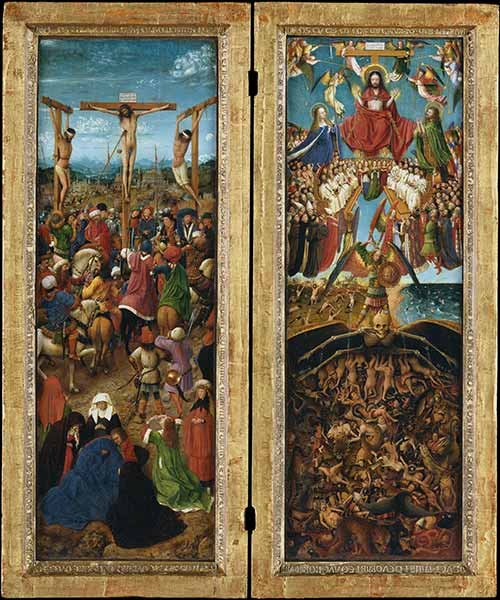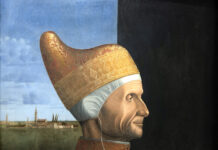A beautiful masterpiece from Flemish painter Jan van Eyck is the subject of an exhibition at the Metropolitan Museum of Art in New York.
Jan Van Eyck’s (1390-1441) “Crucifixion” and “Last Judgment” paintings, circa 1440, have been a subject of constant fascination for Renaissance and Gothic scholars. A new exhibition at the Metropolitan Museum of Art in New York seeks to highlight the findings of a recent study on the paintings, which could shed new light on their proposed relationship — or add to the mystery.
“Are they intended to be viewed as a pair?” has long been the question surrounding the two works. For hundreds of years, it has been unclear whether Van Eyck’s “Last Judgment” and “Crucifixion” were meant to be paired as a diptych, displayed separately, or to appear as the wings in a triptych whose center panel was lost long ago.
Organizers, researchers, and curators believe they have uncovered new evidence that helps paint a clearer picture of the relationship between the two. Using the latest x-ray and infrared reflectography technology, researchers have uncovered Gothic script on the frames of the paintings. Via ArtDaily, “The technical investigation of the Metropolitan’s Crucifixion and Last Judgment is part of a longer ongoing study of Van Eyck’s works, including the cleaning and restoration of the Ghent Altarpiece, one of the seminal works of Western European art, and a comprehensive study of the artist’s oeuvre through the Verona Project at the Institut royal du Patrimoine artistique (KIK/IRPA) in Brussels. A Sunday at the Met program on April 17, 2016, will present the findings of these groundbreaking investigations.
“This small exhibition is the latest in a series of highly focused presentations initiated by the Museum’s Department of European Paintings as part of their technical investigations of key paintings in the Met collection. Another exhibition in the series, now on view, examines the creative process of Andrea del Sarto by looking closely at his ‘Holy Family with the Young Saint John the Baptist.’”
To learn more, visit the Metropolitan Museum of Art.
This article was featured in Fine Art Today, a weekly e-newsletter from Fine Art Connoisseur magazine. To start receiving Fine Art Today for free, click here.








